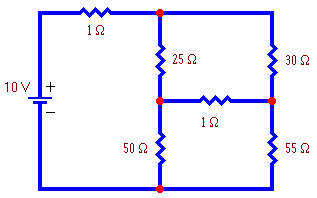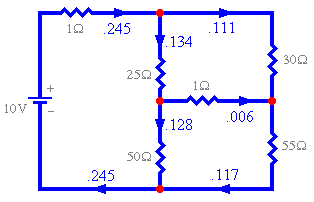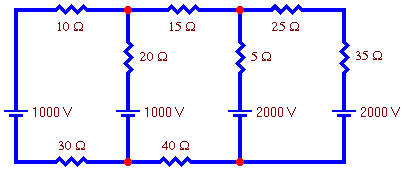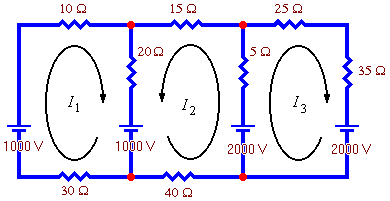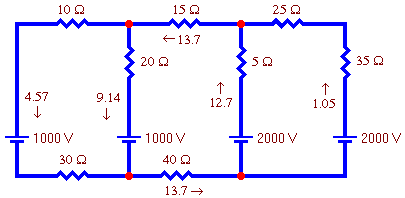In this method, we set up and solve a system of equations in which the unknowns are loop currents. The currents in the various branches of the circuit are then easily determined from the loop currents.
- Click here for a tutorial on loop currents vs. branch currents.
- Click here to see software that does loop current analysis.
The steps in the loop current method are:
- Count the number of required loop currents required. Call this number m.
- Choose m independent loop currents, call them I1, I2, . . . , Im and draw them on the circuit diagram.
- Write down Kirchoff’s
Voltage Law for each loop. The result, after
simplification, is a system of n linear equations in
the n unknown loop currents in this form:

where R11, R12, . . . , Rmm and V1, V2, . . . , Vm are constants.
Alternatively, the system of equations can be gotten (already in simplified form) by using the inspection method.
- Solve the system of equations for the m loop
currents I1, I2, . . .
, Im using Gaussian elimination or some other method.
- Reconstruct the branch currents from the loop currents.
